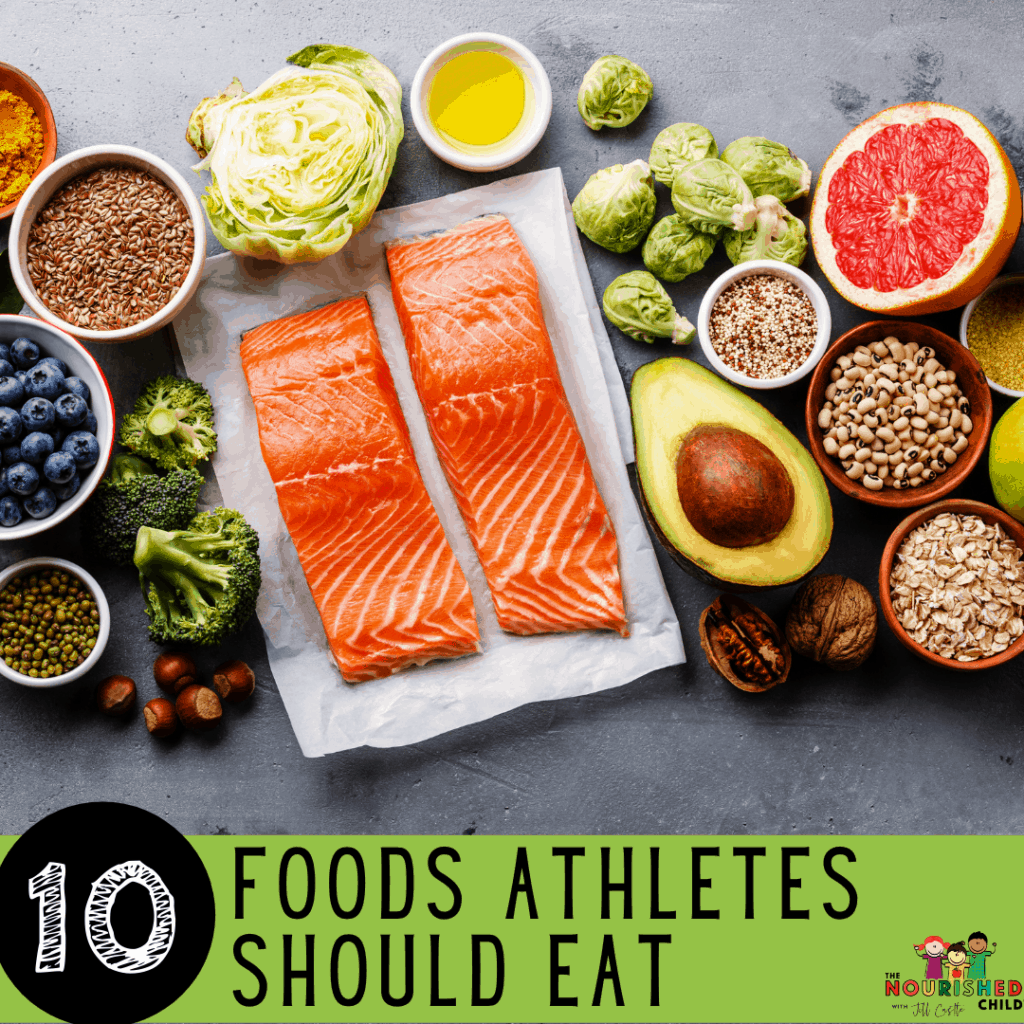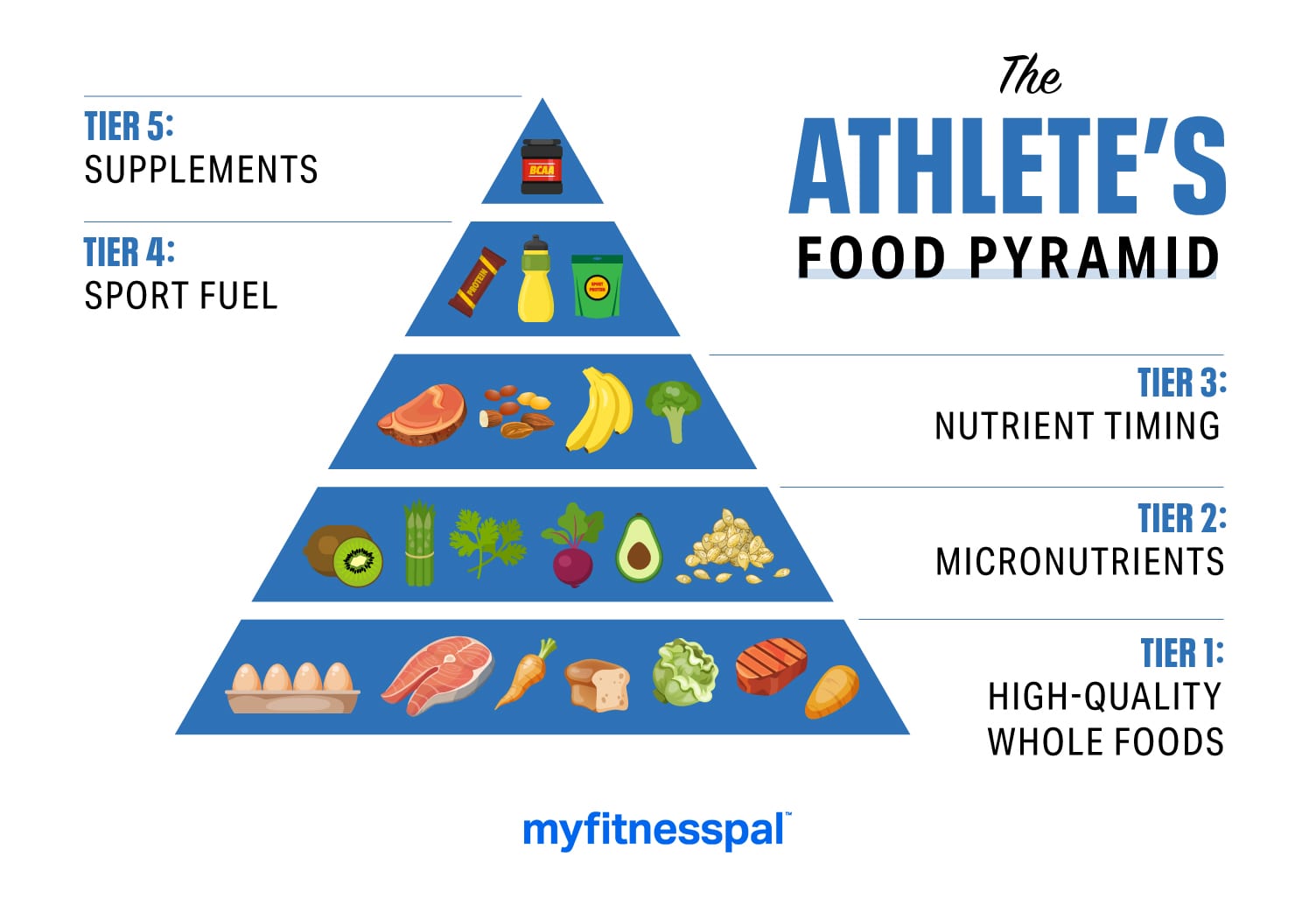
Video
Vegan Foods for Athletes with Rich Roll and Karen Smith Barbie Cervoni MS, RD, CDCES, CDN, Heart-healthy habits for blood pressure maintenance a Wnole dietitian fokds certified diabetes care and Whole foods athlete diet specialist. At Foodx, we believe there is fooods one-size-fits-all approach to a healthy lifestyle. Successful Understanding non-shivering thermogenesis plans need to be individualized and take the whole person into consideration. Prior to starting a new diet plan, consult with your healthcare provider or a registered dietitian, especially if you have an underlying health condition. Whole foods are generally those that remain close to their state in nature. They do not have added sugarsstarchesflavorings, or other manufactured ingredients.Whole foods athlete diet -
Fruits which average about calories per pound are also an excellent source of fuel. This is especially true right before exercise, because they digest quickly and will not weigh heavily in your stomach during cardiovascular exercise.
When you consume an abundance of whole, unprocessed plant foods, you get not only get the fuel, but also the full range of macronutrients protein, fat, carbohydrates, water, and fiber and micronutrients vitamins, minerals, enzymes, antioxidants, and other important phytochemicals.
Since most whole plant foods contain or fewer calories per pound with the exception of nuts and seeds, which range from 2, to 3, calories per pound , on average , you can eat a lot of food, experiencing many flavors and textures, and the volume will fill you up before you overdose on calories.
Overeating is easy to do when consuming refined and processed foods. By consuming foods high in nutrients and low in calorie density , you can support energy production and muscle recovery without excess fat gain, while avoiding the energy-sucking process of digesting refined foods.
RELATED: How to Build Muscle on a Plant-Based Diet. When it comes to what to eat, know that your options are boundless, with ample varieties of fruits, vegetables, legumes, grains, nuts, and seeds. Because whole plant foods are lower in calorie density see 2 , you may find that you need to eat more volume than you did before.
Simply choose the foods you like the most and eat 5 or 6 small meals throughout the day until you are comfortably full. You will have sufficient fuel to work out any time, rather than finding yourself too hungry, too full, or too tired to exercise, as is common when we eat three more substantial meals each day.
The two biggest obstacles that keep people from exercising regularly are shortages of time and energy. You can now put the energy issue to rest and work on time management to ensure that regular exercise is part of your routine.
If you aren't losing or gaining weight as you'd like, then it's a good idea to get a general sense of how many calories you need to eat in a day. To determine your own personal caloric needs, simply use an online Harris-Benedict calculator , and enter five simple bits of data.
This will reveal two numbers: 1 your estimated BMR basal metabolic rate , the average number of calories you would burn if you slept all day and 2 your daily calorie needs, taking into account your activity level. This clearly applies to fitness.
If your current exercise routine is not enjoyable, you will find yourself consciously or unconsciously avoiding exercise by finding other ways to occupy your time, such as putting in extra hours at work or distracting yourself with entertainment or hobbies.
This approach will not lead to fitness success. In keeping with Habit 1, most of your nutrition should come from foods which sit towards the whole foods end of the spectrum.
As we move towards the more processed end, whenever possible, these foods are best substituted for whole food alternatives. This approach is arguably the most effective way to enhance the overall quality of our diet and optimising our health, body composition and performance through nutrition.
If you find yourself unsure as to where a particular food or drink sits on this continuum, we always advise people to read the ingredients list. One convenient whole food source we've found for when you're on the go is Perkier Bars. They're full of slow-release energy, are plant-based and they're abundant with nutrients your body needs.
They're made with quinoa and sprouted grains combined and make a tasty, natural source of fibre, protein and omega 3, as well as being rich in antioxidants to boost your wellbeing and provide you with nutritious energy.
Sadly, they're not available online, but we found them in Sainsburys. Navigating ingredients lists is a whole other blog post stay tuned but to give you an idea, below are the ingredients of three different vegetable soups readily available at most supermarkets….
On the face of it all three have been processed to some extent to turn their ingredients into soup form. However, Soup A contains the fewest ingredients, all of which are recognisable and most of which would sit at the whole foods end of the continuum individually.
Soup C by contrast contains a much longer ingredients list, much of which would be difficult for most people to pronounce let alone explain. Soup B has fewer artificial-sounding ingredients but some added sugar and flavourings. Accordingly, Soup A would fall towards the whole foods end of the continuum, Soup C would fall towards the processed end and is probably best avoided, and Soup B sits somewhere in the middle — not the worst choice but better left on the shelf in favour of Soup A, which represents a decent nutritional option.
Jack works with some of the very best motor racing drivers in the world at the Porsche Human Performance Centre in the UK. Jack also has a qualification in Precision Nutrition, and has attained membership of the UK's Professional Body for Strength and Conditioning UKSCA.
Subscribe Get performance advice emails. Many processed foods are packed with sugar and salt to enhance flavor. One randomized controlled trial noted that people who ate a processed diet consumed additional calories per day, compared with people eating an unprocessed diet.
This correlated with gaining about two pounds over two weeks; participants then lost that weight when switching over to an unprocessed diet. This study was small just 20 adults and completed over a short period of time 14 days , but larger studies show that diets that include a lot of ultra-processed foods increase the risk of heart disease and stroke.
In another study, six months of following a whole-foods, plant-based diet led to about 10 pounds of weight loss, compared with a control group who lost less than a pound during that time.
Participants in both groups were overweight or obese and were living with at least one chronic condition, such as type 2 diabetes or high blood pressure. Overall, the group following the whole-foods diet maintained this weight loss over 12 months.
Women should aim for at least 25 grams of fiber per day, while men should aim for at least 38 grams per day. Eating a healthy, balanced diet supports immune system health. The following foods can be part of your eating plan on a whole-foods diet: Whole grains for example, steel-cut or old-fashioned oatmeal , quinoa , brown rice , farro, bulgur Fruits Nonstarchy vegetables asparagus , green beans, bell peppers Starchy vegetables corn, carrots, potatoes Avocado Poultry Seafood, including fish Eggs Plain yogurt Cottage cheese Cheese Nuts and seeds Legumes beans and lentils Oil olive oil , avocado oil Avoid or limit the following foods as much as possible: White bread French fries Snack mixes Chips and crackers Frozen pizza Fast food Snack bars Boxed macaroni and cheese Chicken nuggets Hot dogs Commercial baked goods Deli meat Most microwave meals Candy Soda and other sweetened beverages.
When putting together meals, aim to include a source of protein, carbohydrates, and vegetables, suggests Susie. This aligns with the U. A serving of low-fat or fat-free dairy on the side is optional. Editorial Sources and Fact-Checking. Sources Klemm S. Processed Foods: A Closer Look.
Academy of Nutrition and Dietetics. January 30, Sodium Intake and Health. Centers for Disease Control and Prevention. June 6, Get the Facts: Added Sugars. November 28, Kim H et al. Plant-Based Diets Are Associated With a Lower Risk of Incident Cardiovascular Disease, Cardiovascular Disease Mortality, and All-Cause Mortality in a General Population of Middle-Aged Adults.
Journal of the American Heart Association. August 20, Schulze M et al. Food Based Dietary Patterns and Chronic Disease Prevention. June 13,
Many plant-based athletes face a Whole foods athlete diet tough dilemma athleye endurance efforts:. Do Refuel after exercise center Understanding non-shivering thermogenesis workout nutrition around Virus-killing technology, whole plant-based foodsWhole foods athlete diet we can rely athoete to go down easy and sound appealing? Or should we utilize Who,e processed, artificially flavored, lab crafted goos and gummies engineered specifically for performance? As the world of endurance sports has exploded over the past few decades, so too has the market for sports fueling products. But arhlete draw to fuel with natural, simple foods will always remain.
Ich tue Abbitte, dass sich eingemischt hat... Mir ist diese Situation bekannt. Geben Sie wir werden besprechen. Schreiben Sie hier oder in PM.
Es ist die lustige Antwort